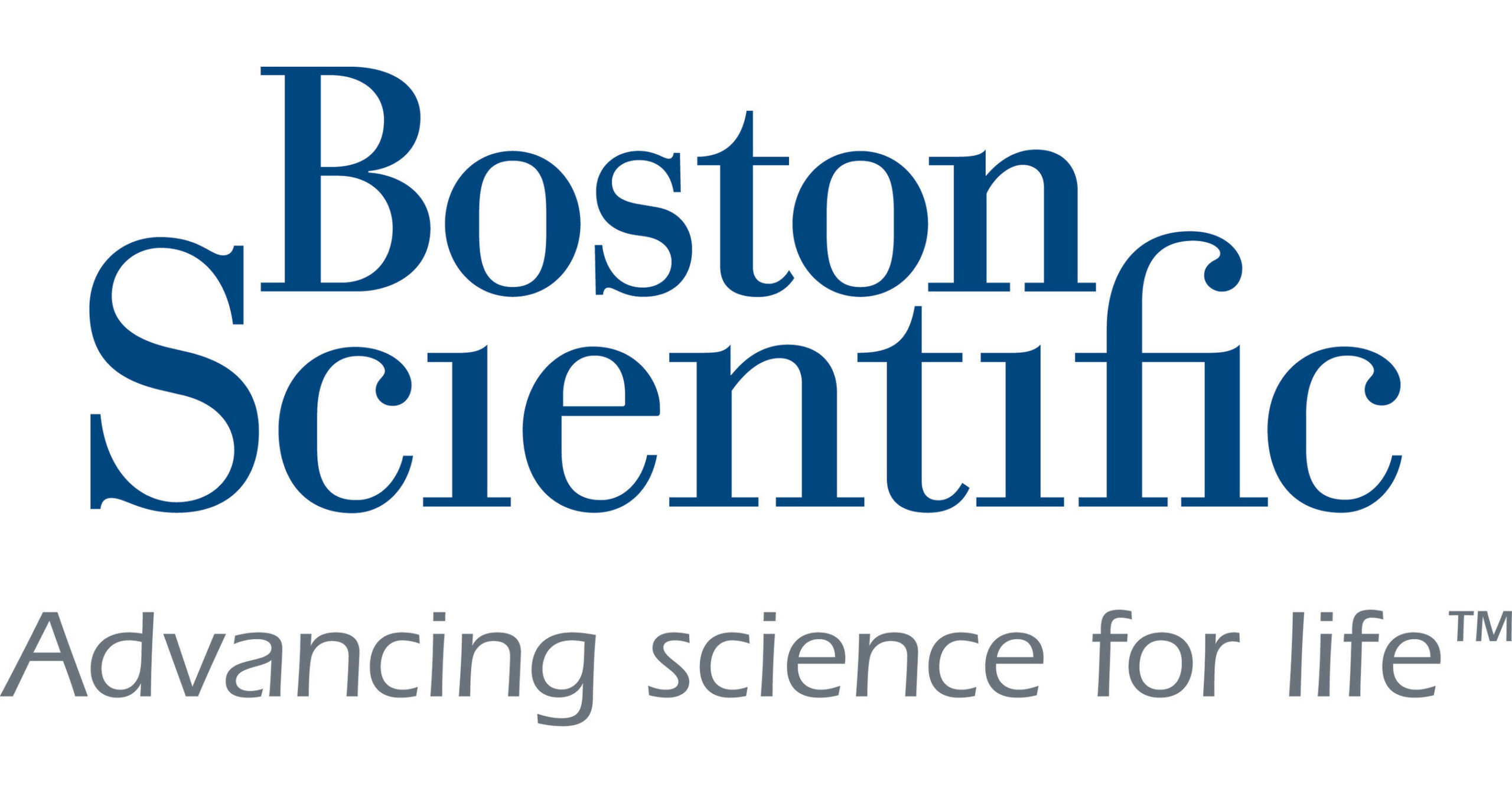Introduction
Colorectal cancer (CRC) is a globally prevalent malignancy with a rising incidence. China has the highest annual rates of new cases and CRC-related deaths.1 While advances in early detection and treatment have reduced CRC incidence…

Colorectal cancer (CRC) is a globally prevalent malignancy with a rising incidence. China has the highest annual rates of new cases and CRC-related deaths.1 While advances in early detection and treatment have reduced CRC incidence…

After graduating, Chong quickly took up a job as an executive assistant to a local entrepreneur to repay her student loan.
“I learned the importance of not only placing the right people in the right jobs but also ensuring the workforce can adapt to evolving business needs,” she says. The experience also taught her how business resilience and care for employees can go hand in hand as she observed how her employer, conscious of the impact on people’s lives, prioritized the company’s workforce when responding to business challenges.
“I realized that HR decisions are more than just operational choices, but have also have the power to transform workplace culture and employee well-being” she says.
Chong’s career in HR took off as she moved into specialized roles in various industries, from property and construction to logistics and supply chain management. She gained hands-on experience across the spectrum of HR functions, from recruitment and workforce engagement to organizational transformation.
“I was motivated by being able to contribute to different types of change, and with each move, I gained new perspectives on organizational growth and transition,” she explains. Her career spanned several countries in Southeast Asia, enriching her understanding of different workplace cultures.
After becoming a mother, Chong decided to focus on opportunities closer to home. In 2015, she joined the World Health Organization (WHO) in Malaysia, working in the service centre that processes contracts and benefits for its staff globally. Her role enabled the timely deployment of personnel, often during emergency situations such as disease outbreaks or global health initiatives.
After a year, she took on a more senior role as a team lead and resolved to continue a career in international organizations. “Working at an international organization was very motivating, as I felt the mandate was more meaningful than being profit centred. I felt I was contributing to something important,” she says.

Pink granite boulders scattered across the dark volcanic peaks of the Hudson Mountains in West Antarctica, have revealed the presence of a vast buried granite body – almost 100 km across and 7 km thick, about half the size of Wales in…

MARLBOROUGH, Mass., Oct. 22, 2025 /PRNewswire/ — Boston Scientific Corporation (NYSE: BSX) generated net sales of $5.065 billion during the third quarter of 2025, growing 20.3 percent on a reported basis, 19.4 percent on an operational1 basis and 15.3 percent on an organic2 basis, all compared to the prior year period. The company reported GAAP net income attributable to Boston Scientific common stockholders of $755 million or $0.51 per share (EPS), compared to $469 million or $0.32 per share a year ago, and achieved adjusted3 EPS of $0.75 for the period, compared to $0.63 a year ago.
“We delivered another exceptional quarter of strong performance across businesses and regions thanks to the winning spirit of our global team,” said Mike Mahoney, chairman and chief executive officer, Boston Scientific. “As we shared at our recent Investor Day meeting, we are well-positioned for differentiated growth that is fueled by our category leadership strategy, relentless focus on innovation and commitment to scaling capabilities.”
Third quarter financial results and recent developments:
|
1. |
Operational net sales growth excludes the impact of foreign currency fluctuations. |
|
2. |
Organic net sales growth excludes the impact of foreign currency fluctuations and net sales attributable to certain acquisitions and divestitures for which there are less than a full period of comparable net sales. |
|
3. |
Adjusted EPS excludes the impacts of certain charges (credits) which may include amortization expense, goodwill and other intangible asset impairment charges, acquisition/divestiture-related net charges (credits), investment portfolio net losses (gains) and impairments, restructuring and restructuring-related net charges (credits), certain litigation-related net charges (credits), European Union (EU) Medical Device Regulation (MDR) implementation costs, debt extinguishment net charges, deferred tax expenses (benefits) and certain discrete tax items. |
|
4. |
Our Emerging Markets countries include all countries except the United States, Western and Central Europe, Japan, Australia, New Zealand and Canada. |
Net sales for the third quarter by business and region:
|
Increase/(Decrease) |
|||||||||||||
|
Three Months Ended |
Reported |
Impact of |
Operational Basis |
Impact of |
Organic |
||||||||
|
(in millions) |
2025 |
2024 |
|||||||||||
|
Endoscopy |
$ 747 |
$ 678 |
10.1 % |
(1.1) % |
9.0 % |
— % |
9.0 % |
||||||
|
Urology |
682 |
532 |
28.1 % |
(0.6) % |
27.5 % |
(22.1) % |
5.4 % |
||||||
|
Neuromodulation |
293 |
268 |
9.1 % |
(0.5) % |
8.6 % |
— % |
8.6 % |
||||||
|
MedSurg |
1,722 |
1,479 |
16.4 % |
(0.8) % |
15.6 % |
(8.0) % |
7.6 % |
||||||
|
Cardiology |
2,641 |
2,129 |
24.0 % |
(1.0) % |
23.1 % |
— % |
23.1 % |
||||||
|
Peripheral Interventions |
702 |
602 |
16.7 % |
(0.9) % |
15.8 % |
(9.5) % |
6.3 % |
||||||
|
Cardiovascular |
3,343 |
2,731 |
22.4 % |
(1.0) % |
21.5 % |
(2.1) % |
19.4 % |
||||||
|
Net Sales |
$ 5,065 |
$ 4,209 |
20.3 % |
(0.9) % |
19.4 % |
(4.2) % |
15.3 % |
||||||
|
Increase/(Decrease) |
|||||||||||||
|
Three Months Ended September 30, |
Reported |
Impact of |
Operational Basis |
||||||||||
|
(in millions) |
2025 |
2024 |
|||||||||||
|
U.S. |
$ 3,294 |
$ 2,593 |
27.0 % |
— % |
27.0 % |
||||||||
|
EMEA |
793 |
773 |
2.6 % |
(4.6) % |
(2.0) % |
||||||||
|
APAC |
802 |
684 |
17.1 % |
(0.2) % |
16.9 % |
||||||||
|
LACA |
175 |
159 |
10.4 % |
(0.8) % |
9.6 % |
||||||||
|
Net Sales |
$ 5,065 |
$ 4,209 |
20.3 % |
(0.9) % |
19.4 % |
||||||||
|
Emerging Markets4 |
$ 765 |
$ 684 |
11.8 % |
(0.2) % |
11.5 % |
||||||||
|
Amounts may not add due to rounding. Growth rates are based on actual, non-rounded amounts and may not recalculate precisely. |
|
|
Net sales growth rates that exclude the impact of foreign currency fluctuations and/or the impact of certain acquisitions/divestitures are not prepared in accordance with U.S. GAAP. |
Guidance for Full Year and Fourth Quarter 2025
The company estimates net sales growth for the full year 2025, versus the prior year period, to be approximately 20 percent on a reported basis and approximately 15.5 percent on an organic basis. Full year organic net sales guidance excludes the impact of foreign currency fluctuations and net sales attributable to certain acquisitions and divestitures for which there are less than a full period of comparable net sales. The company estimates EPS on a GAAP basis in a range of $1.97 to $2.01 and estimates adjusted EPS, excluding certain charges (credits), of $3.02 to $3.04.
The company estimates net sales growth for the fourth quarter of 2025, versus the prior year period, to be in a range of approximately 14.5 to 16.5 percent on a reported basis, and 11 to 13 percent on an organic basis. Fourth quarter organic net sales guidance excludes the impact of foreign currency fluctuations and net sales attributable to certain acquisitions and divestitures for which there are less than a full period of comparable net sales. The company estimates EPS on a GAAP basis in a range of $0.48 to $0.52 and estimates adjusted EPS, excluding certain charges (credits), of $0.77 to $0.79.
Conference Call Information
Boston Scientific management will be discussing these results with analysts on a conference call today at 8:00 a.m. ET. The company will webcast the call to interested parties through its website: investors.bostonscientific.com. Please see the website for details on how to access the webcast. The webcast will be available for approximately one year on the Boston Scientific website.
About Boston Scientific
Boston Scientific transforms lives through innovative medical technologies that improve the health of patients around the world. As a global medical technology leader for more than 45 years, we advance science for life by providing a broad range of high-performance solutions that address unmet patient needs and reduce the cost of healthcare. Our portfolio of devices and therapies helps physicians diagnose and treat complex cardiovascular, respiratory, digestive, oncological, neurological and urological diseases and conditions. Learn more at www.bostonscientific.com and follow us on LinkedIn.
Cautionary Statement Regarding Forward-Looking Statements
This press release contains forward-looking statements within the meaning of Section 27A of the Securities Act of 1933 and Section 21E of the Securities Exchange Act of 1934. Forward-looking statements may be identified by words like “anticipate,” “expect,” “project,” “believe,” “plan,” “estimate,” “may,” “intend” and similar words. These forward-looking statements are based on our beliefs, assumptions and estimates using information available to us at the time and are not intended to be guarantees of future events or performance. These forward-looking statements include, among other things, statements regarding our expected net sales; reported, operational and organic revenue growth rates; reported and adjusted EPS for the fourth quarter and full year 2025; our financial performance; acquisitions; clinical trials; our business plans and product performance; and new and anticipated product approvals and launches. If our underlying assumptions turn out to be incorrect, or if certain risks or uncertainties materialize, actual results could vary materially from the expectations and projections expressed or implied by our forward-looking statements. These factors, in some cases, have affected and in the future (together with other factors) could affect our ability to implement our business strategy and may cause actual results to differ materially from those contemplated by the statements expressed in this press release. As a result, readers are cautioned not to place undue reliance on any of our forward-looking statements.
Risks and uncertainties that may cause such differences include, among other things: economic conditions, including the impact of foreign currency fluctuations; future U.S. and global political, competitive, reimbursement and regulatory conditions, including changing trade and tariff policies; geopolitical events; manufacturing, distribution and supply chain disruptions and cost increases; disruptions caused by cybersecurity events; disruptions caused by public health emergencies or extreme weather or other climate change-related events; labor shortages and increases in labor costs; variations in outcomes of ongoing and future clinical trials and market studies; new product introductions; expected procedural volumes; the closing and integration of acquisitions; demographic trends; intellectual property; litigation; financial market conditions; the execution and effect of our business strategy, including our cost-savings and growth initiatives; and future business decisions made by us and our competitors. New risks and uncertainties may arise from time to time and are difficult to predict accurately and many of them are beyond our control. For a further list and description of these and other important risks and uncertainties that may affect our future operations, see Part I, Item 1A – Risk Factors in our most recent Annual Report on Form 10-K filed with the Securities and Exchange Commission, which we may update in Part II, Item 1A – Risk Factors in Quarterly Reports on Form 10-Q we have filed or will file hereafter. We disclaim any intention or obligation to publicly update or revise any forward-looking statements to reflect any change in our expectations or in events, conditions, or circumstances on which those expectations may be based, or that may affect the likelihood that actual results will differ from those contained in the forward-looking statements, except as required by law. This cautionary statement is applicable to all forward-looking statements contained in this press release.
Note: Amounts reported in millions within this press release are computed based on the amounts in thousands. As a result, the sum of the components reported in millions may not equal the total amount reported in millions due to rounding. Certain columns and rows within tables may not add due to the use of rounded numbers. Percentages presented are calculated from the underlying unrounded amounts.
Use of Non-GAAP Financial Information
A reconciliation of the company’s non-GAAP financial measures to the corresponding GAAP measures, and an explanation of the company’s use of these non-GAAP financial measures, is included in the exhibits attached to this press release.
|
BOSTON SCIENTIFIC CORPORATION CONSOLIDATED STATEMENTS OF OPERATIONS (Unaudited) |
|||||
|
Three Months Ended September 30, |
Nine Months Ended September 30, |
||||
|
(in millions, except per share data) |
2025 |
2024 |
2025 |
2024 |
|
|
Net sales |
$ 5,065 |
$ 4,209 |
$ 14,788 |
$ 12,186 |
|
|
Cost of products sold (excluding amortization of intangibles) |
1,523 |
1,312 |
4,613 |
3,791 |
|
|
Gross profit |
3,542 |
2,897 |
10,175 |
8,395 |
|
|
Operating expenses: |
|||||
|
Selling, general and administrative expenses |
1,741 |
1,562 |
5,053 |
4,372 |
|
|
Research and development expenses |
514 |
407 |
1,483 |
1,156 |
|
|
Royalty expense |
12 |
5 |
40 |
24 |
|
|
Amortization expense |
225 |
205 |
669 |
631 |
|
|
Intangible asset impairment charges |
0 |
— |
46 |
276 |
|
|
Contingent consideration net expense (benefit) |
11 |
(23) |
11 |
(4) |
|
|
Restructuring net charges (credits) |
(8) |
8 |
85 |
12 |
|
|
2,494 |
2,164 |
7,387 |
6,467 |
||
|
Operating income (loss) |
1,048 |
733 |
2,788 |
1,928 |
|
|
Other income (expense): |
|||||
|
Interest expense |
(87) |
(79) |
(259) |
(225) |
|
|
Other, net |
(23) |
14 |
156 |
(7) |
|
|
Income (loss) before income taxes |
939 |
669 |
2,685 |
1,697 |
|
|
Income tax expense (benefit) |
183 |
200 |
463 |
413 |
|
|
Net income (loss) |
755 |
468 |
2,222 |
1,284 |
|
|
Net income (loss) attributable to noncontrolling interests |
(0) |
(0) |
(4) |
(4) |
|
|
Net income (loss) attributable to Boston Scientific common |
$ 755 |
$ 469 |
$ 2,226 |
$ 1,288 |
|
|
Net income (loss) per common share – basic |
$ 0.51 |
$ 0.32 |
$ 1.50 |
$ 0.88 |
|
|
Net income (loss) per common share – diluted |
$ 0.51 |
$ 0.32 |
$ 1.49 |
$ 0.87 |
|
|
Weighted-average shares outstanding |
|||||
|
Basic |
1,481.7 |
1,472.7 |
1,479.6 |
1,470.6 |
|
|
Diluted |
1,495.5 |
1,487.4 |
1,494.0 |
1,484.5 |
|
|
Amounts may not add due to rounding. |
|
BOSTON SCIENTIFIC CORPORATION NON-GAAP NET INCOME AND NET INCOME PER SHARE RECONCILIATIONS (Unaudited) |
|||||||||
|
Three Months Ended September 30, 2025 |
|||||||||
|
(in millions, except per share data) |
Gross |
Operating |
Operating |
Other |
Income |
Net |
Net Income |
Net Income |
Impact |
|
Reported |
$ 3,542 |
$ 2,494 |
$ 1,048 |
$ (110) |
$ 939 |
$ 755 |
$ (0) |
$ 755 |
$ 0.51 |
|
Non-GAAP adjustments: |
|||||||||
|
Amortization expense |
— |
(225) |
225 |
— |
225 |
194 |
2 |
191 |
0.13 |
|
Goodwill and other intangible asset impairment |
— |
(0) |
0 |
— |
0 |
0 |
— |
0 |
0.00 |
|
Acquisition/divestiture-related net charges |
23 |
(76) |
99 |
0 |
99 |
95 |
— |
95 |
0.06 |
|
Restructuring and restructuring-related net |
23 |
(14) |
36 |
— |
36 |
30 |
— |
30 |
0.02 |
|
Investment portfolio net losses (gains) and |
— |
— |
— |
(6) |
(6) |
(5) |
— |
(5) |
(0.00) |
|
EU MDR implementation costs |
7 |
(4) |
11 |
— |
11 |
9 |
— |
9 |
0.01 |
|
Deferred tax expenses (benefits) |
— |
— |
— |
— |
— |
47 |
— |
47 |
0.03 |
|
Discrete tax items |
— |
— |
— |
— |
— |
1 |
— |
1 |
0.00 |
|
Adjusted |
$ 3,595 |
$ 2,175 |
$ 1,419 |
$ (116) |
$ 1,303 |
$ 1,126 |
$ 2 |
$ 1,124 |
$ 0.75 |
|
Three Months Ended September 30, 2024 |
|||||||||
|
(in millions, except per share data) |
Gross |
Operating |
Operating |
Other |
Income |
Net |
Net Income |
Net Income |
Impact |
|
Reported |
$ 2,897 |
$ 2,164 |
$ 733 |
$ (65) |
$ 669 |
$ 468 |
$ (0) |
$ 469 |
$ 0.32 |
|
Non-GAAP adjustments: |
|||||||||
|
Amortization expense |
— |
(205) |
205 |
— |
205 |
177 |
2 |
175 |
0.12 |
|
Acquisition/divestiture-related net charges |
27 |
(116) |
143 |
0 |
144 |
200 |
— |
200 |
0.13 |
|
Restructuring and restructuring-related net |
28 |
(24) |
52 |
— |
52 |
45 |
— |
45 |
0.03 |
|
Investment portfolio net losses (gains) and |
— |
— |
— |
(1) |
(1) |
(1) |
— |
(1) |
(0.00) |
|
EU MDR implementation costs |
9 |
(4) |
13 |
— |
13 |
12 |
— |
12 |
0.01 |
|
Deferred tax expenses (benefits) |
— |
— |
— |
— |
— |
38 |
— |
38 |
0.03 |
|
Adjusted |
$ 2,962 |
$ 1,815 |
$ 1,147 |
$ (65) |
$ 1,082 |
$ 939 |
$ 2 |
$ 937 |
$ 0.63 |
|
An explanation of the company’s use of these non-GAAP financial measures is provided at the end of this document. |
|
|
Amounts may not add due to rounding. |
|
BOSTON SCIENTIFIC CORPORATION NON-GAAP NET INCOME AND NET INCOME PER SHARE RECONCILIATIONS (Unaudited) |
|||||||||
|
Nine Months Ended September 30, 2025 |
|||||||||
|
(in millions, except per share data) |
Gross |
Operating |
Operating |
Other Income (Expense) |
Income Income |
Net (Loss) |
Net Income |
Net Income |
Impact |
|
Reported |
$ 10,175 |
$ 7,387 |
$ 2,788 |
$ (103) |
$ 2,685 |
$ 2,222 |
$ (4) |
$ 2,226 |
$ 1.49 |
|
Non-GAAP adjustments: |
|||||||||
|
Amortization expense |
— |
(669) |
669 |
— |
669 |
576 |
7 |
570 |
0.38 |
|
Goodwill and other intangible asset impairment |
— |
(46) |
46 |
— |
46 |
37 |
— |
37 |
0.02 |
|
Acquisition/divestiture-related net charges |
159 |
(226) |
385 |
(229) |
156 |
157 |
— |
157 |
0.10 |
|
Restructuring and restructuring-related net |
84 |
(162) |
247 |
— |
247 |
215 |
— |
215 |
0.14 |
|
Investment portfolio net losses (gains) and |
— |
— |
— |
(0) |
(0) |
(0) |
— |
(0) |
(0.00) |
|
EU MDR implementation costs |
22 |
(11) |
34 |
— |
34 |
29 |
— |
29 |
0.02 |
|
Deferred tax expenses (benefits) |
— |
— |
— |
— |
— |
139 |
— |
139 |
0.09 |
|
Discrete tax items |
— |
— |
— |
— |
— |
1 |
— |
1 |
0.00 |
|
Adjusted |
$ 10,440 |
$ 6,272 |
$ 4,168 |
$ (332) |
$ 3,836 |
$ 3,375 |
$ 3 |
$ 3,372 |
$ 2.26 |
|
Nine Months Ended September 30, 2024 |
|||||||||
|
(in millions, except per share data) |
Gross |
Operating Expenses |
Operating Income (Loss) |
Other Income (Expense) |
Income (Loss) Income Taxes |
Net (Loss) |
Net Income Noncontrolling Interests |
Net Income Stockholders |
Impact Share |
|
Reported |
$ 8,395 |
$ 6,467 |
$ 1,928 |
$ (231) |
$ 1,697 |
$ 1,284 |
$ (4) |
$ 1,288 |
$ 0.87 |
|
Non-GAAP adjustments: |
|||||||||
|
Amortization expense |
— |
(631) |
631 |
— |
631 |
545 |
7 |
539 |
0.36 |
|
Goodwill and other intangible asset impairment |
— |
(276) |
276 |
— |
276 |
243 |
— |
243 |
0.16 |
|
Acquisition/divestiture-related net charges |
49 |
(207) |
255 |
1 |
256 |
315 |
— |
315 |
0.21 |
|
Restructuring and restructuring-related net |
83 |
(65) |
149 |
— |
149 |
129 |
— |
129 |
0.09 |
|
Investment portfolio net losses (gains) and |
— |
— |
— |
17 |
17 |
17 |
— |
17 |
0.01 |
|
EU MDR implementation costs |
27 |
(12) |
39 |
— |
39 |
34 |
— |
34 |
0.02 |
|
Deferred tax expenses (benefits) |
— |
— |
— |
— |
— |
120 |
— |
120 |
0.08 |
|
Adjusted |
$ 8,553 |
$ 5,275 |
$ 3,278 |
$ (213) |
$ 3,065 |
$ 2,685 |
$ 2 |
$ 2,683 |
$ 1.81 |
|
An explanation of the company’s use of these non-GAAP financial measures is provided at the end of this document. |
|
|
Amounts may not add due to rounding. |
|
BOSTON SCIENTIFIC CORPORATION Q4 and FY 2025 GUIDANCE RECONCILIATIONS (Unaudited) |
|||||
|
Net Sales |
|||||
|
Q4 2025 Estimate |
|||||
|
(Low) |
(High) |
Full Year 2025 Estimate |
|||
|
Reported growth |
14.5 % |
16.5 % |
~20.0% |
||
|
Impact of foreign currency fluctuations |
(2.0) % |
(2.0) % |
~(1.0)% |
||
|
Operational growth |
12.5 % |
14.5 % |
~19.0% |
||
|
Impact of certain acquisitions/divestitures |
(1.5) % |
(1.5) % |
~(3.5)% |
||
|
Organic growth |
11.0 % |
13.0 % |
~15.5% |
||
|
Earnings per Share |
|||||
|
Q4 2025 Estimate |
Full Year 2025 Estimate |
||||
|
(Low) |
(High) |
(Low) |
(High) |
||
|
GAAP results |
$ 0.48 |
$ 0.52 |
$ 1.97 |
$ 2.01 |
|
|
Amortization expense |
0.13 |
0.13 |
0.51 |
0.51 |
|
|
Acquisition/divestiture-related net charges (credits) |
0.04 |
0.04 |
0.15 |
0.15 |
|
|
Restructuring and restructuring-related net charges |
0.07 |
0.05 |
0.22 |
0.20 |
|
|
Other adjustments |
0.04 |
0.04 |
0.18 |
0.18 |
|
|
Adjusted results |
$ 0.77 |
$ 0.79 |
$ 3.02 |
$ 3.04 |
|
|
Amounts may not add due to rounding. |
Use of Non-GAAP Financial Measures
To supplement our unaudited consolidated financial statements presented on a GAAP basis, we disclose certain non-GAAP financial measures, including adjusted net income (loss), adjusted net income (loss) attributable to Boston Scientific common stockholders and adjusted net income (loss) per share (EPS) that exclude certain charges (credits); operational net sales, which exclude the impact of foreign currency fluctuations; and organic net sales, which exclude the impact of foreign currency fluctuations as well as the impact of certain acquisitions and divestitures with less than a full period of comparable net sales. These non-GAAP financial measures are not in accordance with generally accepted accounting principles in the United States and should not be considered in isolation from or as a replacement for the most directly comparable GAAP financial measures. Further, other companies may calculate these non-GAAP financial measures differently than we do, which may limit the usefulness of those measures for comparative purposes.
To calculate adjusted net income (loss), adjusted net income (loss) attributable to Boston Scientific common stockholders and adjusted net income (loss) per share, we exclude certain charges (credits) from GAAP net income and GAAP net income attributable to Boston Scientific common stockholders, which include amortization expense, goodwill and other intangible asset impairment charges, acquisition/divestiture-related net charges (credits), investment portfolio net losses (gains) and impairments, restructuring and restructuring-related net charges (credits), certain litigation-related net charges (credits), EU MDR implementation costs, debt extinguishment net charges, deferred tax expenses (benefits) and certain discrete tax items. Amounts are presented after-tax using the company’s effective tax rate, unless the amount is a significant unusual or infrequently occurring item in accordance with Financial Accounting Standards Board Accounting Standards Codification Topic 740-270-30, “General Methodology and Use of Estimated Annual Effective Tax Rate.” In addition to the explanation below, please refer to Part II, Item 7. Management’s Discussion and Analysis of Financial Condition and Results of Operations in our most recent Annual Report on Form 10-K filed with the Securities and Exchange Commission or Part I, Item 2. Management’s Discussion and Analysis of Financial Condition and Results of Operations in any Quarterly Report on Form 10-Q that we have filed or will file thereafter for an explanation of each of these adjustments and the reasons for excluding each item. The following is an explanation of each incremental or revised adjustment type, since our most recent Annual Report on Form 10-K, that management excluded as part of these non-GAAP financial measures as well as the reason for excluding each item:
The GAAP financial measures most directly comparable to adjusted net income (loss), adjusted net income (loss) attributable to Boston Scientific common stockholders and adjusted net income (loss) per share are GAAP net income (loss), GAAP net income (loss) attributable to Boston Scientific common stockholders and GAAP net income (loss) per common share – diluted, respectively.
To calculate operational net sales growth rates, which exclude the impact of foreign currency fluctuations, we convert actual net sales from local currency to U.S. dollars using constant foreign currency exchange rates in the current and prior periods. To calculate organic net sales growth rates, we also remove the impact of certain acquisitions and divestitures with less than a full period of comparable net sales. The GAAP financial measure most directly comparable to operational net sales and organic net sales is net sales reported on a GAAP basis.
Reconciliations of each of these non-GAAP financial measures to the corresponding GAAP financial measure are included in the accompanying schedules.
Management uses these supplemental non-GAAP financial measures to evaluate performance period over period, to analyze the underlying trends in our business, to assess our performance relative to our competitors and to establish operational goals and forecasts that are used in allocating resources. In addition, management uses these non-GAAP financial measures to further its understanding of the performance of our operating segments. The adjustments excluded from our non-GAAP financial measures are consistent with those excluded from our operating segments’ measures of net sales and profit or loss. These adjustments are excluded from the segment measures reported to our chief operating decision maker that are used to make operating decisions and assess performance.
We believe that presenting adjusted net income (loss), adjusted net income (loss) attributable to Boston Scientific common stockholders, adjusted net income (loss) per share, operational net sales growth rates and organic net sales growth rates, in addition to the corresponding GAAP financial measures, provides investors greater transparency to the information used by management for its operational decision-making and allows investors to see our results “through the eyes” of management. We further believe that providing this information assists our investors in understanding our operating performance and the methodology used by management to evaluate and measure such performance.
SOURCE Boston Scientific Corporation
This request seems a bit unusual, so we need to confirm that you’re human. Please press and hold the button until it turns completely green. Thank you for your cooperation!

On 4 April, Amadou Bagayoko died suddenly, aged 70, in Bamako, Mali. The country’s ministry of culture announced the news. Thousands attended the funeral, including former collaborators Manu Chao, Youssou N’Dour, Malian–French rapper…

Eating behavior is driven not only by the basic need to alleviate hunger but also by cravings and the pursuit of pleasure from food.1 Individuals commonly experience cravings for foods rich in calories but poor in nutrients.2 The…

A total of 222 Indian athletes – 119 women and 103 men – are competing for medals across 21 sports at the ongoing Asian Youth Games 2025 in Manama, Bahrain.
The continental event – returning after a 12-year gap since the 2013 edition held in…

The new Clean Energy Jobs Plan published by the government at the weekend, with expectations that the number of clean energy sector jobs may double to 860,000 roles by 2030, looks to revamp the process to get more people into the workforce.
This includes funding to get 16- to 19-year-olds skilled in clean energy sector work, investing in engineering higher education provision and the launch of five clean energy technical excellence colleges. Existing investment plans to boost the UK’s skilled construction workforce will supplement this with 10 construction technical excellence colleges. Skills England will also ensure apprenticeships and technical qualifications deliver skills needed across the clean energy sector.
Up to £20 million will also be made available from the UK and Scottish governments to help upskill oil and gas industry workers to allow them to transition to roles in the renewables sector. Following on from a successful skills pilot in Aberdeen. The ‘energy skills passport’, which identifies routes for oil and gas workers to transition into roles in offshore wind, will also be updated to include nuclear and electricity grid roles.
The government has already published plans for a ‘fair work charter’ to cover the wind industry, with new social value requirements also having come into effect this month as part of the national procurement plan which applies equally to the clean energy sector. Both initiatives are a drive to improve standards and training within the sector. The plan also signals that the government considers the fair work charter for the wind industry as a pilot and will explore extending the concept to other clean energy sectors.
Gillian Harrington, an employment law expert with Pinsent Masons, said the moves send a clear message to clean energy employers about the need to demonstrate commitment to improving employment standards.
“The message to employers who want to engage in government backed clean energy projects is clear – your employment standards will be an important aspect of any evaluation of a funding request or procurement opportunity,” she said.
“Employers in the clean energy sector may want to plan how any additional fair work standards can be factored into wider changes needed as the Employment Rights Bill is also gradually implemented.”
The report draws together previously highlighted themes, including the government’s clean energy industries sector plan (90 pages / 9.5 MB), 10-year industrial strategy (160 pages / 15.6 MB) and the recent consultation over proposals to link financial incentives for offshore wind companies to fair work standards and skills training for staff as part of clean industry bonuses (CIB) allocation.
The plan also looks to boost trade union involvement in the sector, with unions invited to negotiate the CIB fair work charter with the government and stakeholder employers, along with increasing union recognition and collective bargaining – with the plan noting: “For too long, parts of the clean energy sector have been a union-free zone”. The plan also announces that the government will, “work with industry and trade unions to explore a range of other initiatives, including the potential for Framework Agreements and sector specific arrangements to guide job quality standards for major infrastructure projects”.
Anthony Convery, an expert in employment law with Pinsent Masons, said: “The Employment Rights Bill will make trade union recognition easier and will give even non-recognised unions rights to request physical and digital access to workplaces. The new plan puts clean energy sector employers clearly in the line of sight of unions who are eager to get a foothold in workplaces operating in this sector”.
He added: “The plan for framework agreements also sounds somewhat like a form of sectoral collective bargaining for parts of the clean energy sector. The Employment Rights Bill only makes provision for sectoral collective bargaining in relation to adult social care and school support staff, but Labour’s Plan to Make Work Pay did say that it would assess how and to what extent sectoral collective bargaining could benefit other sectors and tackle labour market challenges”.
The plan also covers extending employment rights to certain offshore workers, with the intention of reducing discrepancies that it notes can arise between offshore oil and gas workers and offshore renewable and low carbon energy workers. Further clarification of this proposed extension of the law will be needed to understand the potential impact, the experts said.